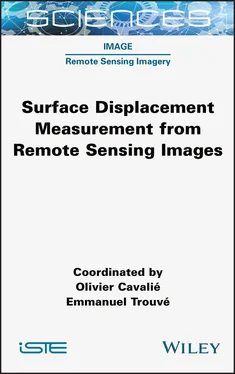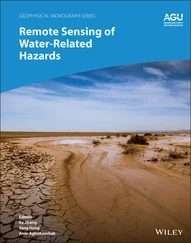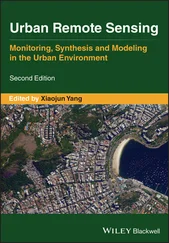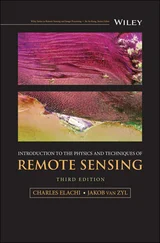RSI has become a broad multidisciplinary domain, attracting scientists across the diverse fields of science and engineering. The books proposed in this RSI series aim to present state-of-the-art scientific knowledge about the primary sources of images acquired by optical and radar sensors. The books cover the processing methods that have been developed by the signal and image processing community to extract useful information for end-users for an extensive range of EO applications.
Each RSI book focuses on a general topic, such as change detection, surface displacement measurement, target detection, model inversion or data assimilation. We dedicate this second book of the RSI series to the measurement of displacements on the Earth’s surface using RSI. It presents the main approaches that are used to derive displacement information from image pairs or image time series using optical and synthetic aperture radar (SAR) data. Following the numerous studies conducted in this domain, we divide this book into methodology and applications.
The first part, Theory, Principles and Methodology, is dedicated to the wide range of methods that have been developed to measure displacement fields from remote sensing images. Chapter 1provides an overview of the main space missions devoted to EO, which have been used to acquire optical and SAR images for more than 40 years. From the archives of space agencies to future missions, this chapter presents the history and the main characteristics of the data processed to measure the Earth’s topography and surface displacement. Chapters 2and 3present the first group of methods developed, which measure displacement from the radiometry of images acquired at different dates, for optical and SAR images, respectively. These methods based on template matching are known as correlation or offset tracking techniques. These chapters include a brief description of the sensor geometry that is required to transform the measured offsets into velocities and to evaluate the potential and limits of this approach. Chapters 4, 5and 6examine the second group of methods, which use the phase of SAR images to derive surface displacement using interferometry (InSAR). The principle of InSAR, the geometric and statistical issues and the first processing steps are described in Chapter 4, including the limitations due to atmospheric artifacts. Chapter 5shows how time-series InSAR methods, namely persistent scatterer and small baseline approaches, succeed in measuring centimeter- and even millimeter-scale deformations. Finally, Chapter 6focuses on the methods that have been developed to unwrap the phase and to take the phase closure principle into account, improving the results or discovering hidden phenomena.
The second part, Applications for Surface Displacements, exhaustively covers the use of SAR interferometry and image correlation to retrieve the Earth’s surface displacements. Indeed, the first application of InSAR that made the cover of Nature, in April 1993, was for the measurement of earthquake movements. Chapter 7is thus dedicated to measuring tectonic displacements and showing how InSAR and image correlation have been used over time to monitor more subtle tectonic motions of the Earth. Next, Chapter 8describes how measuring surface displacement is crucial to understanding the dynamics of volcanoes. In addition to natural phenomena, some of the Earth’s surface deformations are induced by human activities. Chapter 9reviews all kinds of human-induced signals and how InSAR is beneficial to monitoring them. Chapters 10and 11focus on surface motions due to gravity, namely landslide and glacier dynamics. Finally, the last chapter opens up the field of image correlation by cleverly taking advantage of the small spatial baseline and the time lag between the instruments imaging the Earth in different spectral bands onboard the very same satellite.
This book offers for the first time a complete overview of the methodological approaches deployed for the deformation measurement of the Earth’s surface using RSI and their applications to the monitoring of major geophysical phenomena. Over the last few years, a virtuous circle between space agencies and scientists has developed. Indeed, in the last 20 years, the cost of satellite images has decreased drastically, the quantity of data has increased and the performance of data processing algorithms has greatly improved. As a result, the maturity of the remote sensing community now allows near real-time observation of the Earth’s surface deformation, enhancing our capability to detect and mitigate natural hazards substantially.
Olivier CAVALIÉ
Coordinator of the book
Emmanuel TROUVÉ
Coordinator of the book and head of the “Remote Sensing Imagery” subject
Avik BHATTACHARYA
Head of the “Remote Sensing Imagery” subject
February 2022
PART 1 Theory, Principles and Methodology
1
Relevant Past, On-going and Future Space Missions
Philippe DURAND and Stephane MAY
CNES, Toulouse, France
Earth observation satellites have provided images all around the world for more than half a century. Passive optical imaging systems and synthetic aperture radar (SAR) active sensors are nowadays the main sources of information used to derive surface displacement fields. To provide an overview of the images available through space agencies and their main characteristics, this first chapter describes different space missions with data relevant for ground motion displacement measurements. For radar, it is important to observe the field under the same incidence angle, meaning that this may depend upon the satellite orbit housekeeping and general design. SAR missions where orbit is not maintained are not mentioned (except the Iceye mission): their data seem useless at first sight for SAR interferometry (InSAR, see Chapter 4) and probably for SAR correlation algorithms (offset tracking, see Chapter 3). Data access, particularly when free of charge, is also described for the missions.
1.1. Some key parameters for space missions
1.1.1. Parameters for both SAR and optical missions
Remote sensing missions to date have had low-altitude orbits of a few hundred kilometers around the Earth. While optical missions mainly work, except for infrared instruments, along half of the orbit under sun lighting, SAR images can be acquired across the whole orbit, day and night, and also through cloud cover for the frequencies examined later in this chapter.
Sun-synchronous missions: Most remote sensing missions are placed on sun-synchronous orbits. This is important for optical imagery to assure the same looking angle with regard to the sunlight (although it slightly changes anyway with the seasons). These orbits are also used for SAR imagery, sometimes because they are on the same platform as optical sensors (e.g. JERS-1, Envisat or ALOS), and also because of power constraints. Radar instruments have high power consumption and thus recent missions are often on a 6:00 and 18:00 (or dawn–dusk) orbit that maximizes the energy received by a solar panel (which can be fixed and always orientated towards the sun). ERS-1 and ERS-2 inherited a platform heritage from the first French optical satellite (SPOT-1), keeping the local hour at 22:30 (10:30 descending): the panel had a fixed direction towards the sun but had to make one rotation per orbit on the spacecraft.
These orbits are also near polar orbits, which assure a large coverage of the Earth, except some areas near the poles, depending on the look angle and swath, and with differences between the south and north poles depending on whether the radar is left- or right-looking. When crossing the equator, these orbits have a fixed local hour, which must be maintained throughout the mission duration (inclination maneuvers): this is a key parameter, and all satellite passes occur at the same hour if observed under the same incidence angle. Note that the reference value of the local hour is when the orbit crosses the equator from south to north (ascending part).
Читать дальше












